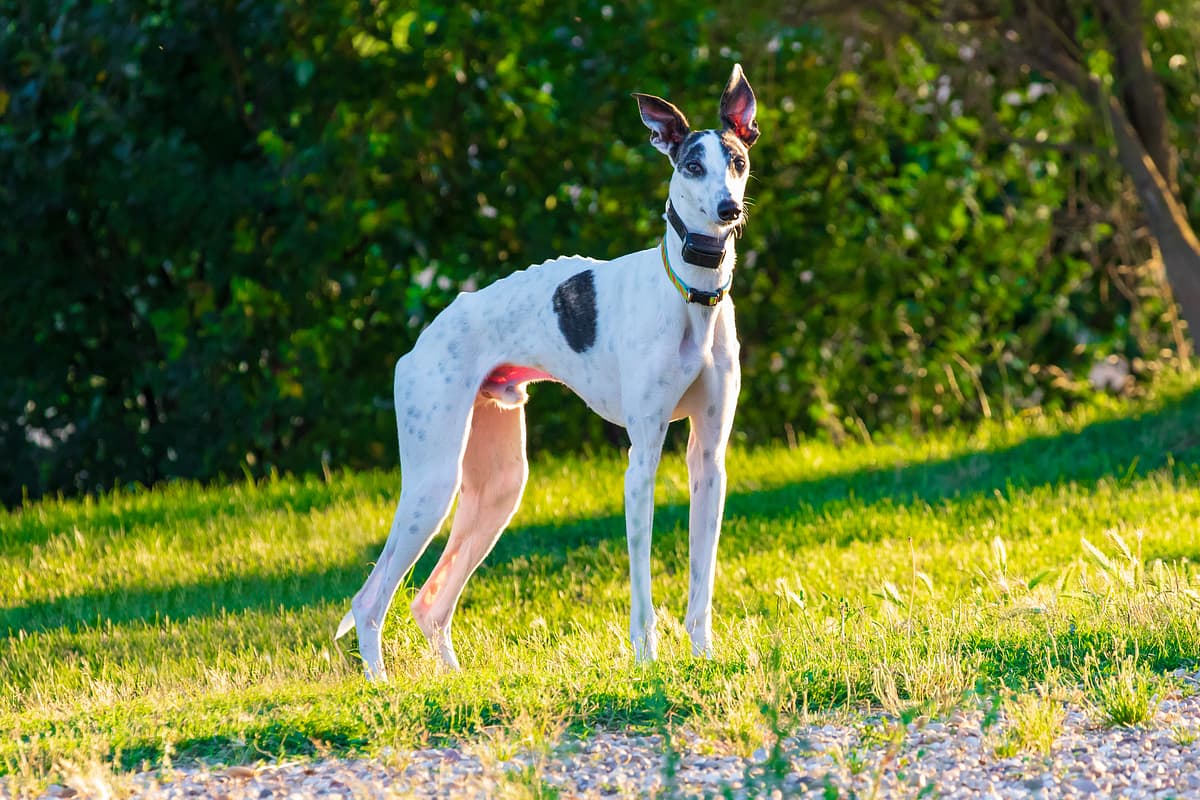Greyhound vs English Bulldog
Discover the differences between Greyhound and English Bulldog to make the best choice for your situation.
Try different breeds

Greyhound
Graceful and affectionate, this breed is known for its gentle demeanor and athletic build. Calm indoors yet quick on the run, it thrives as a loving companion.

English Bulldog
Stocky, courageous, and affectionate, this breed charms with its wrinkled face and calm nature. Loyal and gentle, it thrives as a loving family companion.
Quick comparison
Large
29–32 kg
Short, smooth
10–14 years
27–30 kg
Moderately active
Medium
23–25 kg
Short, smooth
8–10 years
18–23 kg
Low activity needs
Personality & behavior
Compare the personality traits and behavioral characteristics of both breeds.
Greyhound
Gentle and sociable with people and dogs
Quick learner, responds well to training
Moderate activity needs, enjoys short sprints
Playful in short bursts, not overly active
Easily adjusts to various living environments
English Bulldog
Affectionate and gentle with family and children
Learns basic commands with some patience
Prefers lounging over vigorous physical activity
Enjoys play but tires fairly quickly
Adjusts well to most living environments
Care needs
Exercise, grooming, and daily care requirements
Greyhound
Bloat, osteosarcoma
English Bulldog
Brachycephalic syndrome, skin fold infections
Suitability
How well each breed fits different living situations and families
Greyhound
Good option
Calm temperament suits beginners with basic research and commitment
Excellent fit
Quiet, low-energy indoors, and adapts well to small spaces
Moderately suitable
Enjoys short bursts of activity but not high endurance
Supervised recommended
Gentle, but large size and sensitivity need monitoring with toddlers
Usually compatible
Generally sociable, but high prey drive may affect small animals
Not ideal
Dislike being alone and prone to separation anxiety if left too long
English Bulldog
Good option
Easygoing, low-maintenance nature suits owners with limited dog experience
Excellent fit
Moderate exercise needs and calm demeanor work well in small living spaces
Not ideal
Low stamina and breathing issues make them unsuited for high-activity lifestyles
Very suitable
Gentle, patient, and tolerant with young children when properly socialized
Usually compatible
Generally sociable but may need guidance with other pets, especially dogs
Not recommended
They struggle with long periods alone and are prone to separation anxiety
Breed strengths
What each breed excels at and their best qualities
Greyhound
- Gentle and calm indoors
- Low grooming requirements
- Generally friendly with other dogs
- Adapts well to apartment living
- Minimal barking tendency
English Bulldog
- Affectionate with family members
- Generally good with children
- Low exercise requirements
- Minimal grooming needs
- Adaptable to apartment living
Challenges & considerations
Potential challenges and considerations for each breed
Greyhound
- High prey drive toward small animals
- Prone to separation anxiety
- Sensitive to extreme temperatures
- Can be difficult to train off-leash
- Thin skin prone to injury
English Bulldog
- Prone to respiratory problems
- High risk of overheating
- Susceptible to skin infections
- Can be stubborn during training
- Tends to drool frequently
Ready to choose your perfect breed?
Learn more about each breed or compare other breeds to find the perfect match for your lifestyle.
Discover more helpful tools
Make use of our other free tools to get the most out of your pet experience
